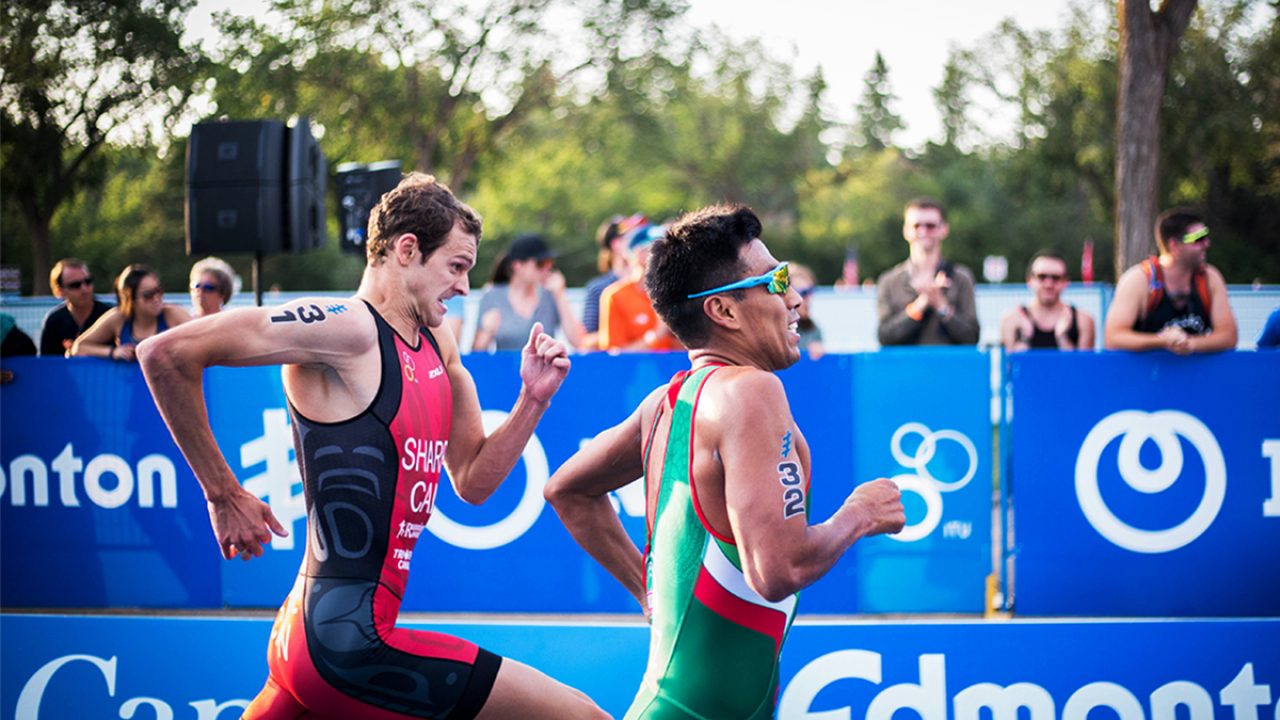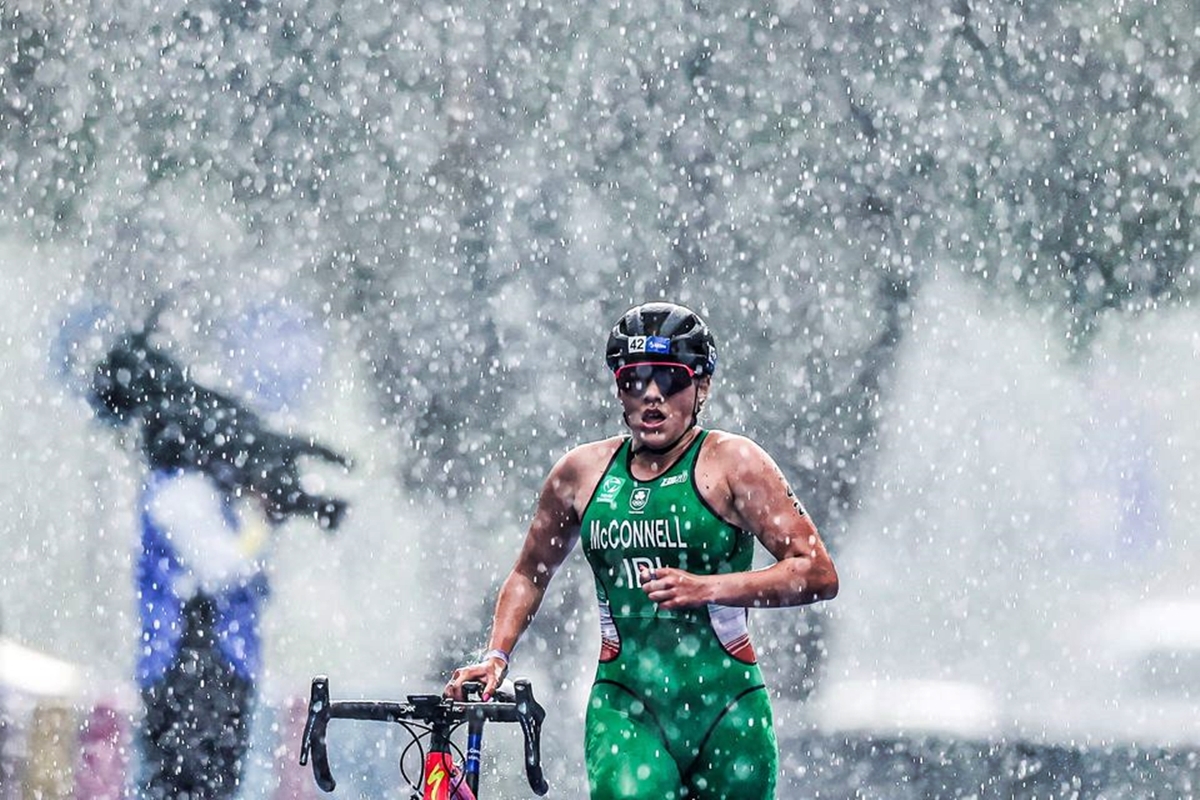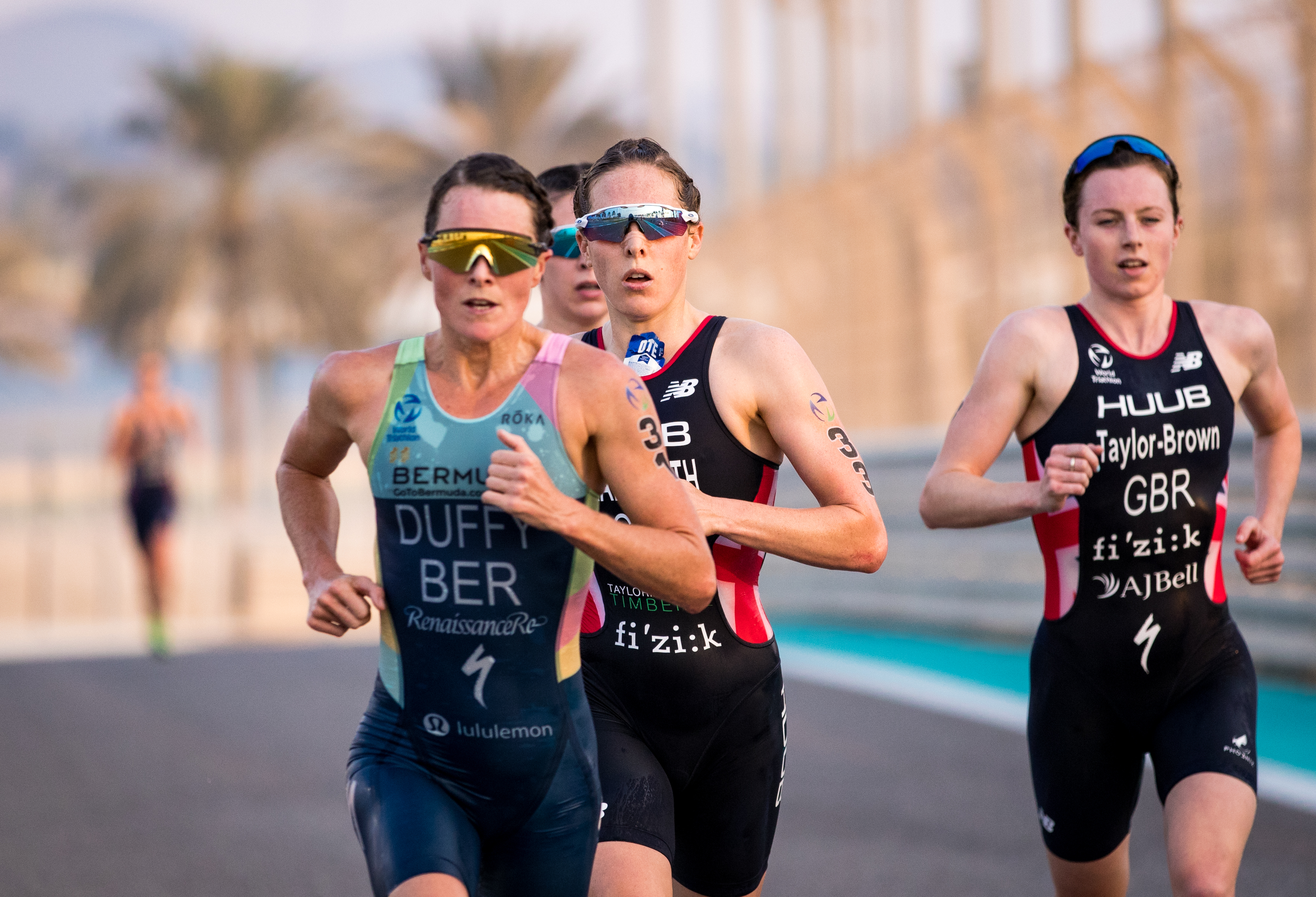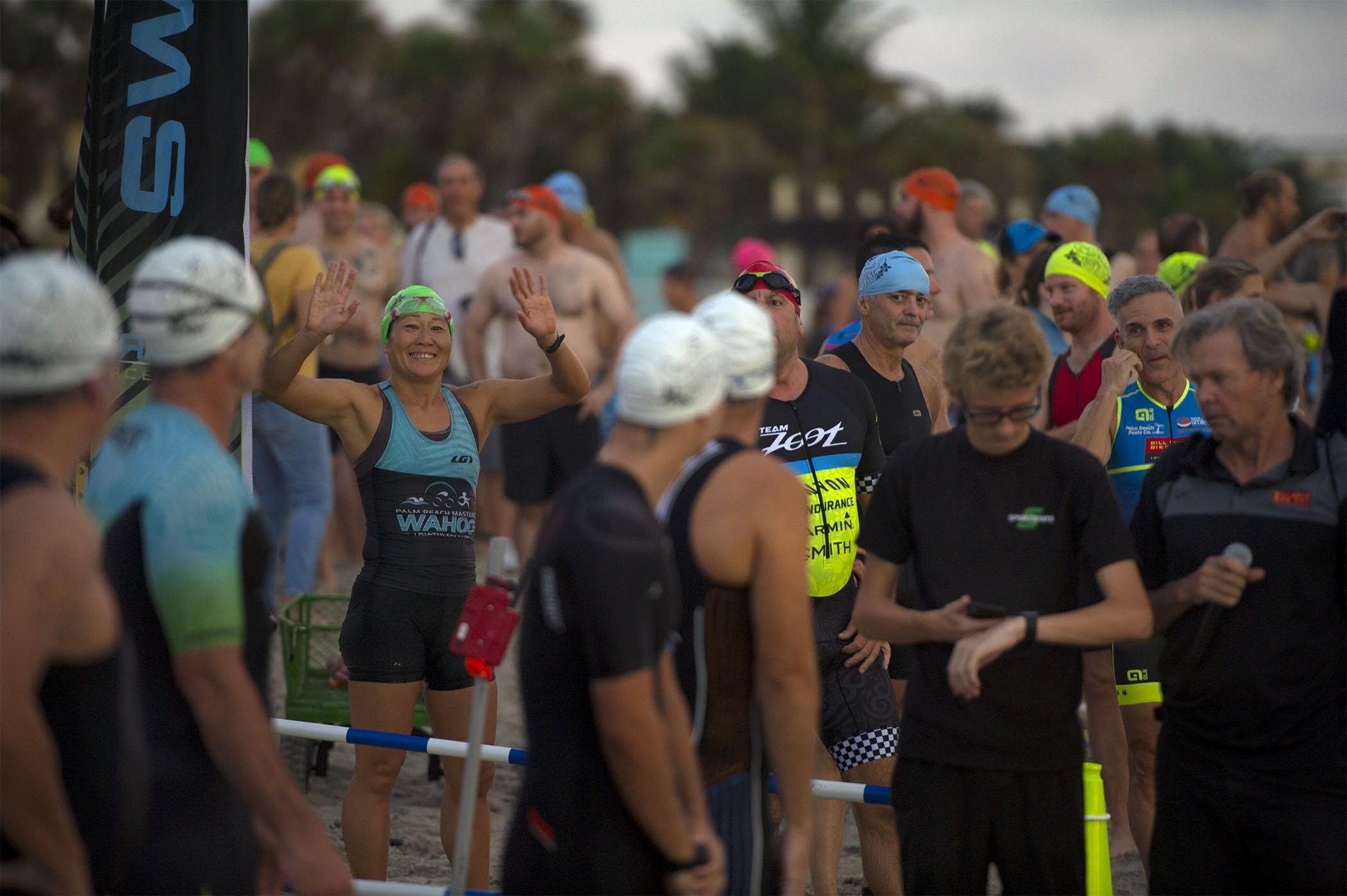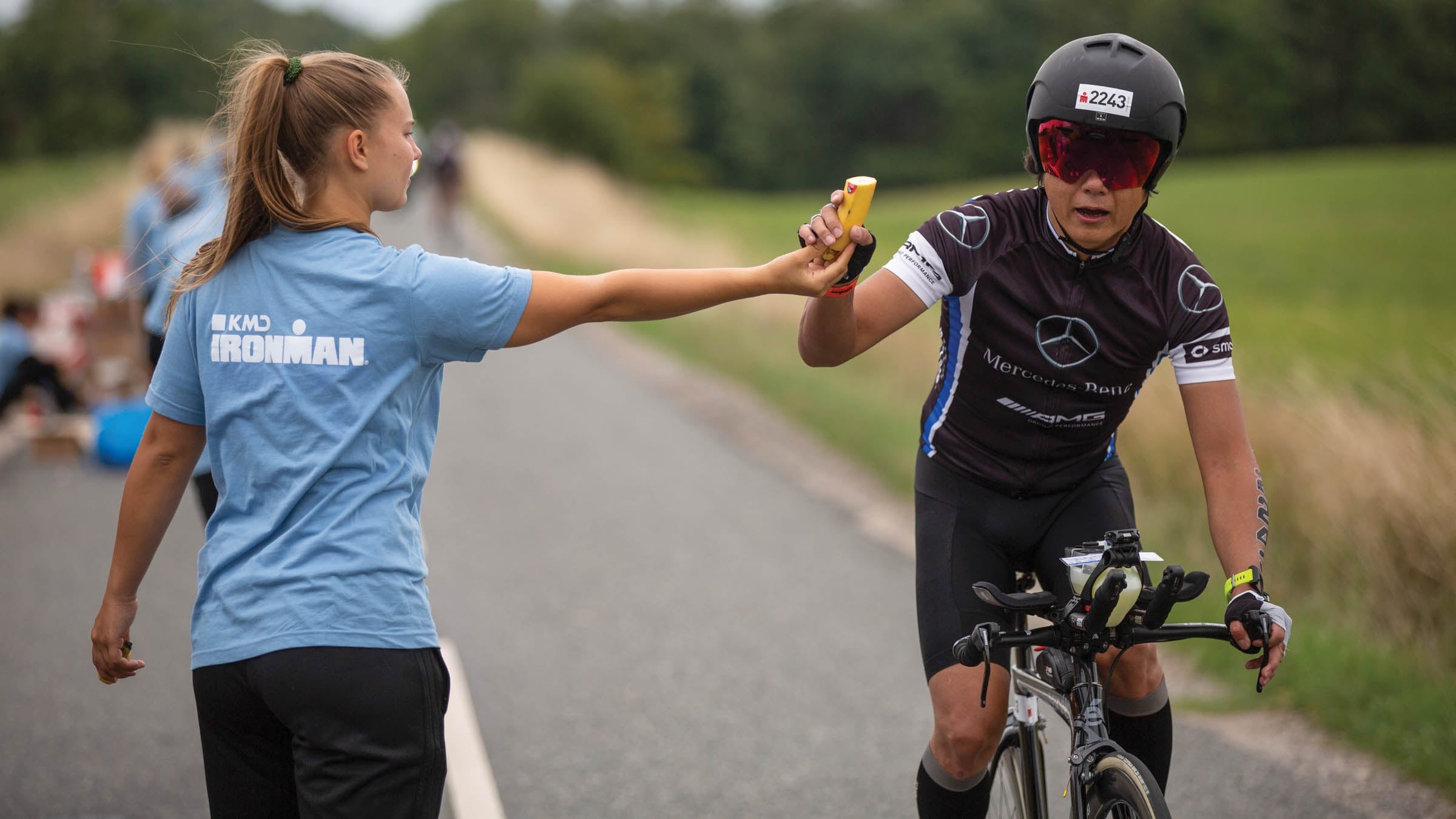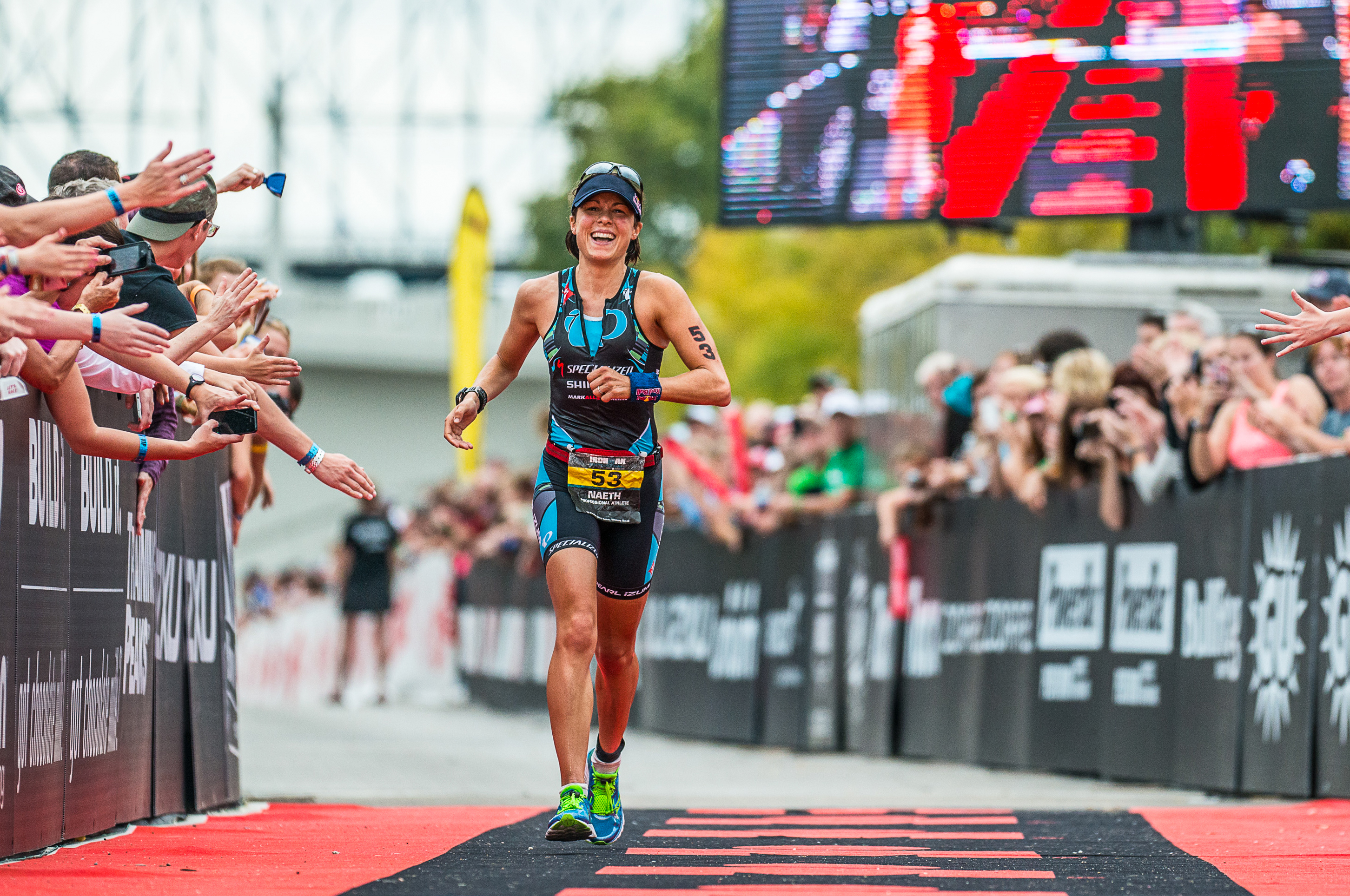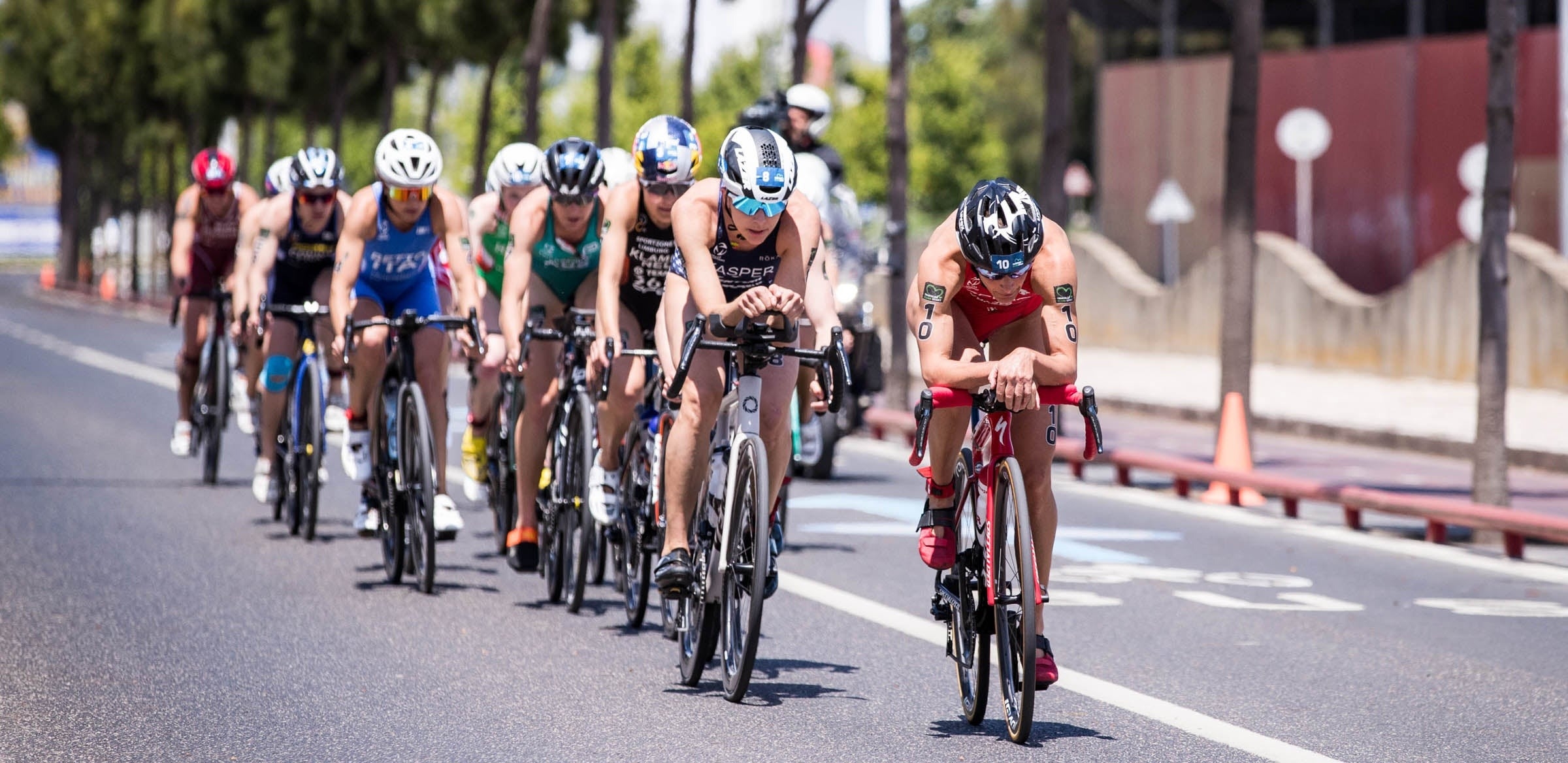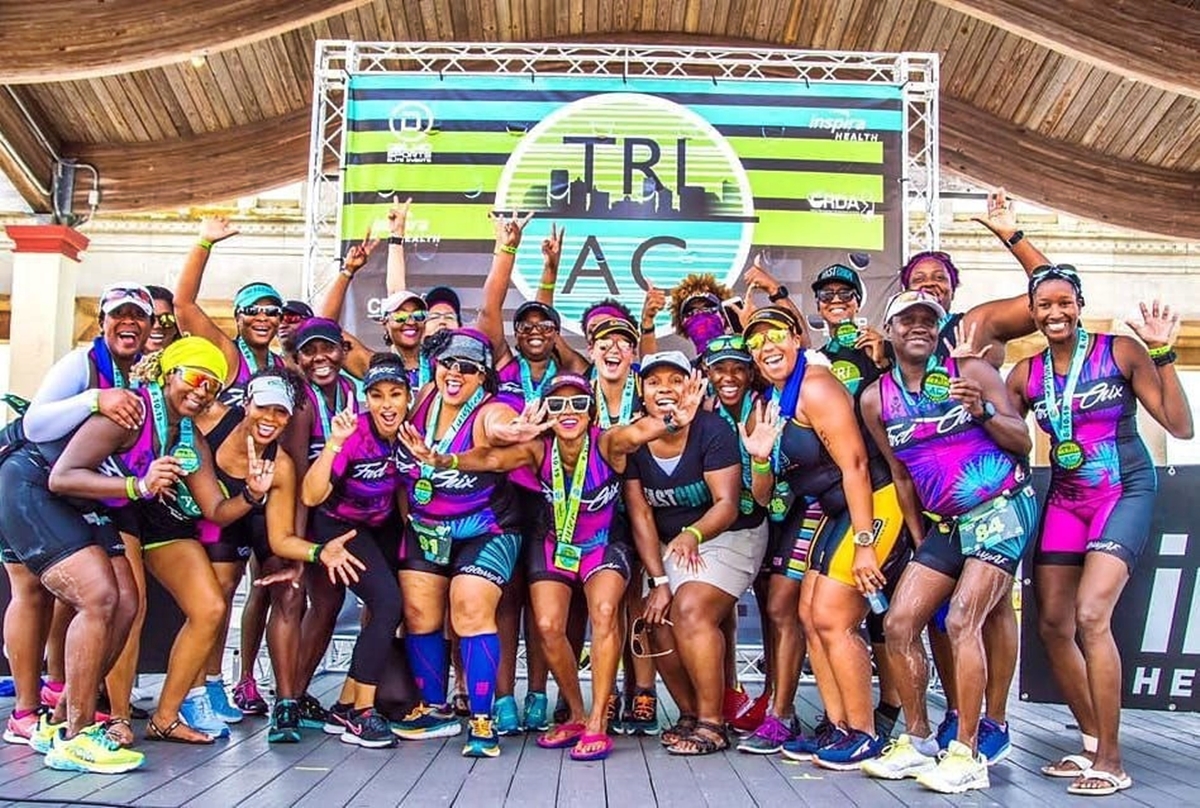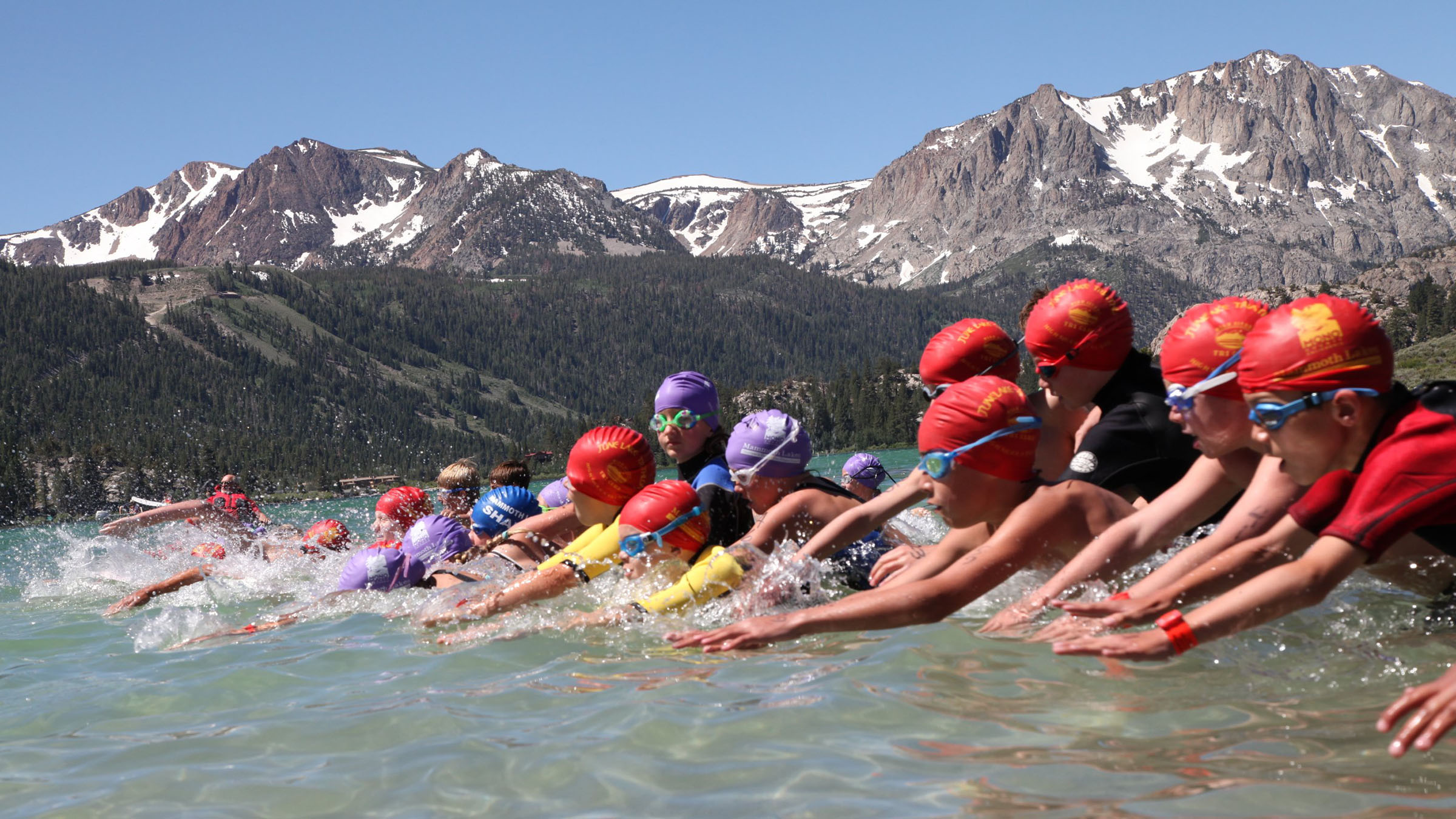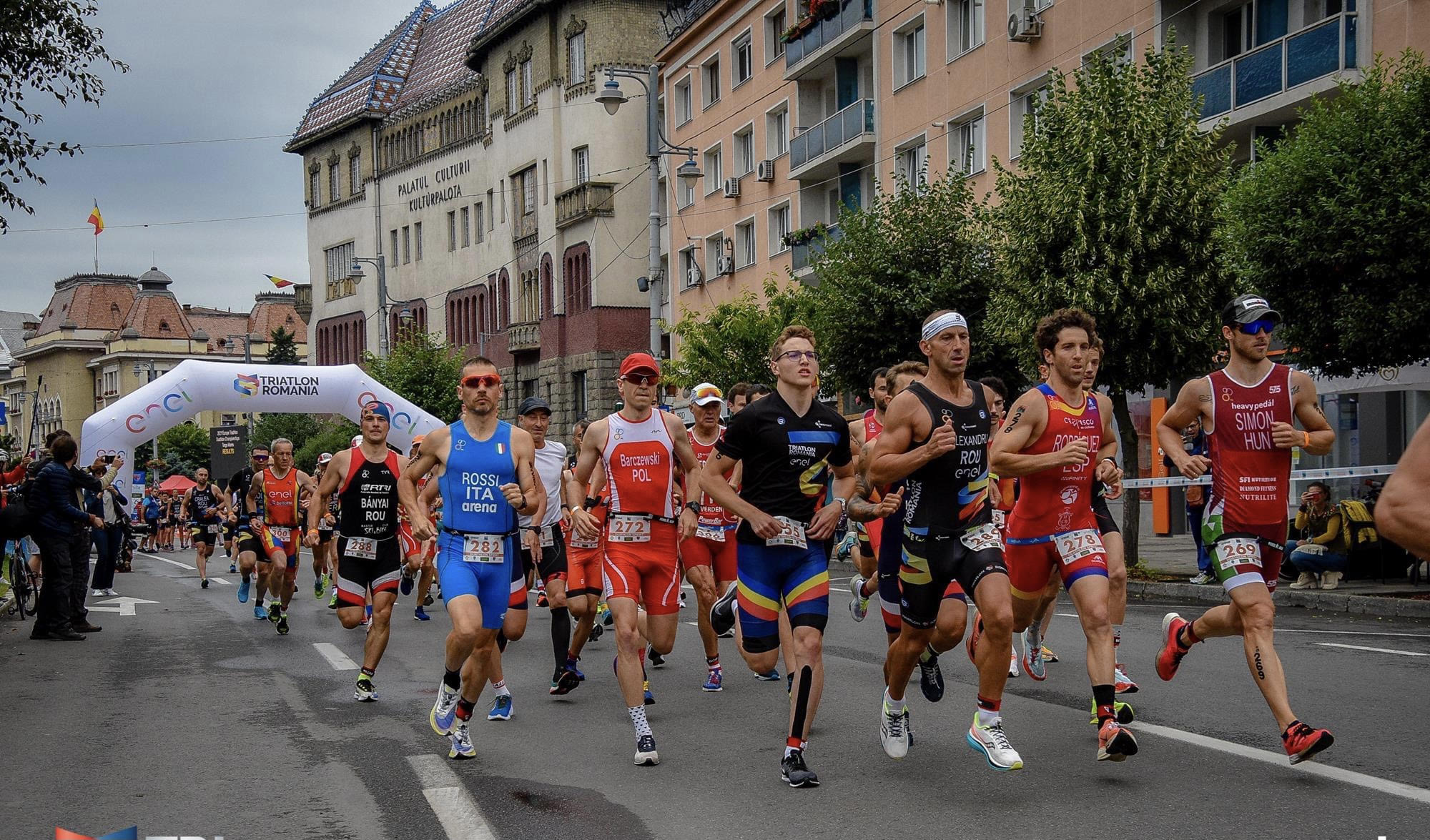

Featured
How Is Age Determined For Triathlon
Modified: January 2, 2024
Discover how age is determined for triathlon events and find out what factors may impact your eligibility. Don't miss our featured article on age categories in triathlon!
Introduction
Welcome to the world of triathlon, an exhilarating and demanding sport that showcases the physical prowess and mental fortitude of athletes across various age groups. Whether you’re a youth, a master, or an elite triathlete, age plays a crucial role in determining the categories you compete in. In this article, we will explore how age is determined for triathlon and the different age categories that exist within the sport.
Triathlon, a multi-disciplinary endurance sport consisting of swimming, cycling, and running, has gained immense popularity over the years, attracting participants of all ages and skill levels. To ensure fair competition and equal opportunities, triathlon events are organized into different age groups, each with its own set of rules and requirements.
Age groups in triathlon are typically determined by an athlete’s age as of December 31st of the current year. This ensures consistency across events and provides a standardized method for categorizing participants. By grouping athletes based on age, events can be tailored to specific age ranges, allowing athletes to compete against others who are in a similar stage of life.
It’s important to note that age categories may vary slightly between different countries and governing bodies. However, the fundamental concept remains the same: to create a level playing field and foster healthy competition among athletes of similar age.
Age verification is a crucial aspect of triathlon competitions to ensure that athletes are competing in the appropriate category. Participants are required to provide proof of their date of birth through official identification documents such as a passport or birth certificate. This verification process adds transparency and ensures that athletes are placed in the correct age group.
Once an athlete’s age has been verified, the next step is to determine the specific age group they will compete in. This is typically done by calculating the athlete’s age as of December 31st of the current year and referring to the predefined age divisions set by the organizing committee or governing body of the event.
In the following sections, we will delve into the specific age determination processes for different categories of triathletes, including youth and junior triathletes, masters triathletes, elite triathletes, and paratriathletes.
Age Categories in Triathlon
Triathlon events organize participants into different age categories to ensure fair competition and to create a level playing field for athletes of similar age. The age categories in triathlon are typically divided into groups such as youth, junior, masters, elite, and paratriathlon. Let’s take a closer look at each of these age categories:
Youth
The youth category is designed for triathletes between the ages of 16 and 19. This age group is a critical transition period for aspiring triathletes as they develop their skills and begin to compete at a more competitive level. Youth triathletes often participate in events specifically tailored to their age group, where they can showcase their abilities and gain experience in a supportive environment.
Junior
The junior category is for triathletes between the ages of 20 and 24. Junior triathletes are typically in the early stages of their athletic careers and are honing their skills as they strive to excel in the sport. Competing in the junior category allows athletes to challenge themselves against their peers and gain exposure to higher-level competitions.
Masters
The masters category is for triathletes who are 40 years of age and older. This age group allows seasoned athletes to continue competing in triathlon while acknowledging their experience and dedication to the sport. Masters triathletes bring a wealth of knowledge and skill to the events they participate in and serve as an inspiration to athletes of all ages.
Elite
The elite category is reserved for the highest level of triathletes who have achieved exceptional levels of performance. Elite triathletes often compete professionally and are recognized for their outstanding athletic abilities. Athletes in the elite category compete against the best in the sport, pushing their physical and mental limits to secure podium finishes.
Paratriathlon
Paratriathlon is a category specifically designed for athletes with physical disabilities. These athletes demonstrate incredible determination and courage as they compete in the three disciplines of triathlon. The paratriathlon category is further divided into subcategories based on the severity and nature of the disability, ensuring fair competition within this unique and inspiring group of athletes.
The age categories in triathlon provide a framework that allows athletes to compete against peers of similar age and skill level. By ensuring fair competition, these age categories contribute to the inclusivity and growth of triathlon as a sport, creating opportunities for athletes of all ages to participate and excel.
Birthdate Verification
Birthdate verification is a crucial step in the process of determining age categories in triathlon. It serves as a means to ensure that athletes are competing in the appropriate age group, promoting fair competition and maintaining the integrity of the sport.
When registering for triathlon events, athletes are required to provide proof of their date of birth. Typically, this is done by submitting official identification documents such as a passport or birth certificate. These documents serve as concrete evidence of an athlete’s age and are used to verify their eligibility for a specific age category.
The verification process is important to maintain the fairness and accuracy of age categories in triathlon. It prevents athletes from competing in age groups that do not align with their actual age, which could give them an unfair advantage over others. Additionally, it ensures that athletes are not mistakenly placed in an age category that may be too challenging or not suitable for their skill level.
Organizing committees and governing bodies of triathlon events have strict protocols in place to validate the authenticity of the submitted identification documents. Advanced technology and rigorous procedures are utilized to detect any potential discrepancies or fraudulent activity. This ensures that the birthdate verification process is thorough and reliable.
By implementing a robust birthdate verification system, triathlon events create a level playing field and maintain the integrity of competition. Athletes can have confidence that they are competing against others within their appropriate age group, allowing for fair and meaningful results.
Furthermore, birthdate verification aids in the organization and administration of events. It helps event organizers categorize participants accurately, allowing for efficient planning, scheduling, and allocation of resources. This ensures that athletes have an optimal experience while participating in triathlon events.
It is worth noting that birthdate verification may vary slightly from one event to another, depending on the governing bodies and their specific protocols. However, the overarching goal remains consistent: to ensure that athletes compete in the age categories that align with their verified birthdates.
Overall, birthdate verification plays a critical role in the triathlon community. It serves as a necessary process to guarantee fair competition, maintain the integrity of the sport, and provide athletes with opportunities to showcase their skills and abilities among their peers of similar age.
Age Group Calculation
Age group calculation is an important step in determining which category an athlete will compete in during triathlon events. This process involves calculating an athlete’s age as of December 31st of the current year to determine their appropriate age group.
To calculate an athlete’s age group, the organizing committee or governing body of the event generally follows a straightforward method. They subtract the athlete’s birth year from the current calendar year to determine the athlete’s age. For example, if an athlete was born in 1990 and the current year is 2022, the calculation would be as follows:
2022 (Current Year) – 1990 (Birth Year) = 32 (Age as of December 31st)
In this case, the athlete would belong to the age group of 30-34. The age group brackets usually vary in five-year increments to ensure a fair distribution of participants within each category.
The age group calculation is applied consistently across all triathlon events to create a standardized method of categorization. This allows athletes to compete against others who are in the same age range, providing a fair and balanced playing field.
It’s important to note that age group calculations may differ slightly depending on specific event regulations or governing bodies. Some events may have different age group brackets or include sub-categories within age groups to cater to a wider range of participants. However, the underlying principle remains the same: to place athletes in age groups based on their calculated age as of December 31st.
Age group calculation brings multiple benefits to both athletes and event organizers. For athletes, it ensures that they are competing against individuals within a similar stage of life and fitness level, promoting fair competition and facilitating a sense of camaraderie. It also allows athletes to track their performance and progress within their respective age groups over time.
For event organizers, age group calculation simplifies the process of organizing and managing participants. It aids in scheduling races, logistics planning, and accurately evaluating results within age categories. This streamlined approach ensures smooth event operations and enhances the overall participant experience.
The age group calculation is a fundamental aspect of triathlon events, enabling athletes to compete in categories that align with their calculated age. It helps create a level playing field for participants and promotes fair competition across all age groups, making triathlon a sport accessible to individuals of different ages and skill levels.
Age Determination for Youth and Junior Triathletes
Age determination for youth and junior triathletes plays a crucial role in ensuring that young athletes compete in appropriate age categories and have the opportunity to develop their skills in a supportive and fair environment. The age determination process for these categories follows specific guidelines set by governing bodies and event organizers.
For youth triathletes, who typically fall into the age range of 16 to 19, age is determined based on the athlete’s birth year. Their age is calculated as of December 31st of the current year. This method ensures that athletes compete against others within a similar age range, allowing for fair and balanced competition.
Junior triathletes, between the ages of 20 and 24, follow the same age determination process as youth triathletes. Their age is calculated in the same manner, based on their birth year as of December 31st. This method helps ensure that junior triathletes compete against peers of their own age, fostering healthy competition and growth within the sport.
Age determination for youth and junior triathletes is especially important as it provides a platform for young athletes to develop their skills, gain experience, and set goals for themselves in a competitive setting. It allows them to compete within their age group, which often results in more equalized matches and a greater sense of achievement.
Competing in the appropriate age category enables youth and junior triathletes to gauge their progress and improvement over time. It also provides them with opportunities to interact with fellow athletes in their age groups, fostering friendships, camaraderie, and a sense of community within the sport.
Governing bodies and event organizers of youth and junior triathlon events recognize the importance of age determination and adhere to strict protocols to ensure accurate categorization. They require participants to provide official identification documents such as birth certificates or passports for verification purposes. These documents serve as proof of the athlete’s age and help prevent any discrepancies in age group placement.
By implementing a thorough age determination process, youth and junior triathletes can compete on a level playing field, challenge themselves, and learn valuable lessons in resilience, sportsmanship, and goal-setting. It paves the way for their continued growth and progression within the sport, opening doors to more advanced levels of competition as they mature and gain experience.
In summary, age determination for youth and junior triathletes follows specific guidelines to ensure fair competition and to provide a platform for young athletes to thrive and succeed. By competing in appropriate age categories, youth and junior triathletes can showcase their talents, set and achieve goals, and develop lifelong skills and habits that extend beyond the world of triathlon.
Age Determination for Masters Triathletes
Age determination for masters triathletes is a vital component of organizing events that cater to athletes aged 40 and above. Masters triathletes bring a wealth of experience and dedication to the sport, and it is essential to ensure that they compete in age categories that reflect their maturity and fitness level. The age determination process for masters triathletes follows specific guidelines set by governing bodies and event organizers.
The age of masters triathletes is typically calculated as of December 31st of the current year. Using their birth year, organizers subtract the athlete’s birth year from the current year to determine their age group. For example, if an athlete was born in 1970 and the current year is 2022, their age for competition purposes would be calculated as follows:
2022 (Current Year) – 1970 (Birth Year) = 52 (Age as of December 31st)
This age calculation helps place masters triathletes into age categories that ensure fair and balanced competition among athletes of similar age and experience levels. The use of age groups allows masters triathletes to compete against their peers, fostering a sense of camaraderie and providing a platform for athletes to track their progress and achievements as they continue to participate in the sport.
Governing bodies and event organizers of triathlon events for masters athletes implement age verification processes to ensure accurate categorization. Participants are usually required to provide official identification documents such as passports, birth certificates, or driver’s licenses to verify their age. This verification process adds transparency and safeguards the integrity of the age determination process.
Age determination for masters triathletes acknowledges their dedication and commitment to the sport over the years. It allows them to compete against others in their age group and fosters a supportive and inspiring environment. Masters triathletes serve as role models for those starting their triathlon journey later in life, demonstrating that age is not a barrier to pursuing athletic goals.
Furthermore, age determination for masters triathletes encourages healthy living and active lifestyles among adults of all ages. It provides a platform for athletes to continue challenging themselves physically and mentally, promoting overall well-being and maintaining a sense of fulfillment in their triathlon journey.
In summary, age determination for masters triathletes is a crucial aspect of organizing events that cater to athletes aged 40 and above. By ensuring accurate categorization, organizers create a fair and inclusive environment for masters athletes to compete against others who share similar experiences and goals. Age determination for masters triathletes also celebrates their dedication to the sport and provides an opportunity to showcase their skills and achievements among their peers.
Age Determination for Elite Triathletes
Age determination for elite triathletes is an important aspect of organizing events that showcase the highest level of performance in the sport. Elite triathletes possess exceptional talent, skill, and dedication, and it is crucial to ensure that they compete in age categories that reflect their abilities and stage in their athletic careers. The age determination process for elite triathletes follows specific guidelines set by governing bodies and event organizers.
Unlike other age categories in triathlon, age determination for elite triathletes is not solely based on the athlete’s birth year. Instead, it focuses on the athlete’s overall performance and level of expertise in the sport. Elite triathletes are typically categorized based on their skill level and potential for high-level competition.
The determination of elite status is often based on well-defined performance criteria set by governing bodies. These criteria may include achieving specific benchmarks in terms of race results, rankings, or qualifying times. Athletes who meet these criteria are considered to have attained elite status and are eligible to compete in elite triathlon events.
The age of elite triathletes is still considered, but it plays a secondary role in determining the categorization process. However, age restrictions such as minimum and maximum ages may apply to ensure that athletes are at an appropriate stage of their athletic careers.
Age determination for elite triathletes reflects the competitive nature of the sport and aims to provide a platform for the most skilled and talented athletes to showcase their abilities. It allows athletes to compete against others who have similar levels of expertise and helps create a highly competitive environment for them to excel.
Governing bodies and event organizers of elite triathlon events closely monitor the performance of athletes and regularly assess their eligibility for elite status. Athletes must meet specific performance criteria to maintain their standing in the elite category, which ensures that the competition remains at a high level and provides a true test of athletic excellence.
The age determination process for elite triathletes not only recognizes exceptional talent but also allows for the continued development and progression of athletes within the sport. It provides opportunities for young athletes to showcase their abilities at a higher level and for experienced athletes to demonstrate their expertise and compete against the best in the sport.
In summary, age determination for elite triathletes deviates from the traditional age-based categorization used in other age groups. Instead, it focuses on performance-based criteria to identify the most skilled and competitive athletes. Age still plays a secondary role in the categorization process, with age restrictions helping to ensure athletes are at an appropriate stage of their careers. Age determination for elite triathletes creates a platform for exceptional athletes to showcase their talent and fosters a highly competitive environment for them to strive for athletic excellence.
Age Determination for Paratriathletes
Age determination for paratriathletes is an essential aspect of promoting inclusivity and fair competition within the sport. Paratriathlon provides a platform for athletes with physical disabilities to compete and showcase their abilities in the three disciplines of swimming, cycling, and running. The age determination process for paratriathletes follows specific guidelines set by governing bodies and event organizers.
Similar to other age categories in triathlon, the age of paratriathletes is generally determined by their birth year. The athlete’s age is calculated as of December 31st of the current year. This calculation ensures consistency across events and provides a standard method for categorizing participants.
Paratriathlon events have age group brackets similar to those of the able-bodied triathletes. Paratriathletes are placed into their respective age groups based on their calculated age as of December 31st, allowing them to compete against others within a similar age range.
In addition to age, paratriathletes are further categorized into classifications based on the nature and severity of their disabilities. These classifications help to create a level playing field, as athletes with similar disabilities compete against one another. The paratriathlon classification system includes visually impaired, wheelchair users, athletes with limb impairments, and neurologically-impaired athletes, among others.
Governing bodies and event organizers of paratriathlon events adhere to strict protocols to ensure accurate age determination and classification of athletes. Athletes are required to provide documentation such as medical records or other specific forms of verification to support their classification and age group placement.
The age determination process for paratriathletes is crucial in fostering a sense of inclusivity and equal opportunities within the sport. It allows athletes with physical disabilities to compete alongside their peers, pushing boundaries and showcasing their abilities in a supportive environment.
Paratriathlon events embrace diversity and recognize the unique challenges and strengths of each individual. Age determination for paratriathletes ensures that competitions are fair, providing an opportunity for athletes with disabilities to compete on an equal footing and strive for their athletic best.
In summary, age determination for paratriathletes plays a vital role in creating an inclusive and fair environment in the sport. Athletes are placed in age groups based on their birth year, allowing them to compete against others within a similar age range. Additionally, paratriathletes are further categorized into classifications based on the nature of their disabilities, further ensuring fair competition within each classification. Age determination for paratriathletes promotes inclusivity and provides opportunities for athletes with disabilities to excel and inspire others through their participation in triathlon.
Potential Challenges and Controversies in Age Determination
While age determination in triathlon is essential for fair competition and categorization of athletes, it is not without its challenges and potential controversies. Several factors can create complications and lead to discussions surrounding age determination processes. Here are some of the potential challenges and controversies that can arise:
Birthdate Verification:
Ensuring the accuracy of birthdate verification can be challenging, as athletes may submit false or misleading information. Verifying the authenticity of documents can also be time-consuming and may require additional resources. Stricter protocols and advanced verification systems can help address these challenges and minimize the potential for inaccuracies.
Age Group Brackets:
The determination of age group brackets can be a point of contention. Some athletes may argue that the brackets are not inclusive enough or do not accurately reflect their abilities or stage of life. Finding a balance between creating fair and competitive age groups while accommodating a wide range of ages can be a challenge that requires careful consideration and feedback from athletes and experts.
Unforeseen Advancements:
New advancements in training, sports science, and nutrition can impact an athlete’s performance and physical capabilities, potentially challenging the relevance of age group categorization. It raises questions about whether age alone is the most accurate determinant of an athlete’s abilities and whether additional factors should be considered.
Transitions Between Age Groups:
Transitions between age groups can create controversy, especially when athletes are on the cusp of the age cutoff. Some athletes may choose to compete in a younger or older age group for strategic reasons or to maximize their chances of success. Strict protocols and guidelines are necessary to ensure that athletes compete within their appropriate age categories and maintain fair competition.
Differences in Regulatory Standards:
Standards for age determination may vary between countries, governing bodies, and specific events. These discrepancies can lead to confusion and debates over fairness and consistency. Developing international standards and ensuring clear communication and understanding between governing bodies can help address these challenges.
Perceptions of Age:
Age is not a definitive indicator of an athlete’s abilities or potential. Some athletes may possess exceptional skills and capabilities at a relatively young age, while others may continue to excel well into their later years. Appreciating and celebrating the diversity in athletic performances and ensuring fair competition becomes a balancing act for event organizers and governing bodies.
In summary, age determination in triathlon is not immune to challenges and controversies. Birthdate verification, age group brackets, advancements in training, transitions between age groups, regulatory standards, and perceptions of age can all contribute to discussions and debates within the triathlon community. Addressing these challenges requires careful consideration, open dialogue, and a commitment to maintaining fairness and transparency in age determination processes.
Conclusion
Age determination in triathlon is a vital component of organizing fair and competitive events that cater to athletes of different age groups and abilities. By placing athletes in appropriate age categories, triathlon ensures that participants can compete against peers who are at a similar stage in life and possess comparable levels of skill and experience.
The age determination process follows specific guidelines set by governing bodies and event organizers. It typically involves verifying an athlete’s birthdate through official identification documents and calculating their age as of December 31st of the current year. This standardized approach ensures consistency across events and provides a transparent and fair method for categorizing participants.
Youth, junior, masters, elite, and paratriathlon categories allow triathletes to compete in age-appropriate divisions. Each category has its own unique set of rules and requirements, catering to the specific needs and capabilities of athletes within that age group.
Age determination not only promotes fair competition but also fosters a sense of community and camaraderie among triathletes. It provides opportunities for athletes to track their progress and set goals within their respective age groups, while also providing a platform to connect with like-minded individuals who share their passion for the sport.
Challenges and potential controversies can arise in the age determination process, such as birthdate verification, age group brackets, advancements in training, transitions between age groups, differences in regulatory standards, and perceptions of age. It is important for governing bodies, event organizers, and athletes to address these challenges collectively and strive for transparency and consistency in age determination protocols.
In conclusion, age determination in triathlon serves as the foundation for fair competition and categorization, allowing athletes to compete on a level playing field. It underscores the inclusivity of the sport, providing opportunities for athletes of all ages and abilities to participate, progress, and achieve their athletic goals. By continuously refining and improving age determination processes, triathlon can continue to evolve and thrive as a sport that embraces diversity and encourages lifelong participation.
